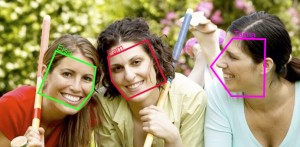The Korea Herald is not where I normally get my news. Nor do I regularly visit The Register (whose tag line is "Biting the Hand that Feeds IT"). But today I visited both in order to learn more about Intel's $30.7M acquisition of Olaworks. 
In case you are not familiar with it, Olaworks was one of the early companies to dedicate itself first to computer vision (primarily face recognition) and then to apply its intellectual property to solve Augmented Reality challenges. The founder of Olaworks, Dr. Ryu Jung-hee, has been a long-standing friend and colleague and one of the most outgoing Koreans I've met. Ryu has attended at least four out of the past five AR Standards Community meetings and miraculously shows up at other events (e.g., he accepted my invitation to come to the first Mobile Monday Beijing meeting and showcase on the topic of mobile AR, and presented about Olaworks during the first AR in China meeting, one year ago).
Not only am I pleased for Ryu and the 60 employees who work for Olaworks, I'm also impressed that an analyst concluded that one reason for the acquisition might be Olawork's facial recognition technologies. At present LG Electronics, Pantech, and HTC make use of Olawork’s face recognition technology in their phones. Gartner analyst Ken Dulaney told The Reg that Intel’s decision to acquire was probably informed by the growing popularity of face recognition software in the consumer space. In fact, Texas Instruments recently shared with me that they are very proud of the facial recognition performance they have on the OMAP. Face recognition could be used for a lot of different applications (not just AR) when it is embedded into the SoC, as an un-named source suggested might be Intel's intention since Olaworks seems to be heading for integration with another Intel acquisition, Silicon Hive.
Another analyst speculating on the acquisition, Bryan Ma of IDC, sees the move as one of many steps Intel is taking to "prove it’s better than market leader ARM in the mobile space. It has been trying to position Medfield as a better performance processor using the same power consumption as ARM,” he told The Reg. “In the spirit of this it would make sense for Intel to move for technology and apps which can harness that horsepower to differentiate it from ARM.”
I'm not familiar with the Korean investment landscape but it may be important that the Private Equity Korea article on the acquisition makes a point about Intel's acquisition of Olaworks being the first full Korean acquisition the chip giant has made. It seems that we rarely hear about Korean startups in the West and I suspect that one reason is that the most common exit strategy of a young Korean company is acquisition by one of the global handset manufacturers (LG Electronics, HTC, or Samsung), or one of the large network operators. It's perfectly logical, not only from a cultural point of view but also because the Korean mobile market is large and has a long history of having its own national telecommunications standards.
After NTT-DoCoMo's launch of its 3G service in October 2001, the second 3G network to go commercially live was SK Telecom in South Korea on the CDMA2000 1xEV-DO technology in January 2002 (10 years ago). By May 2002 the second South Korean 3G network was launched by KTF on EV-DO and thus the Koreans were the first to see competition among 3G operators.
I hope that the Olaworks exit signals the opening of Korean technology silos and an opportunity for other regions of the world to benefit from the advances the Koreans have managed to make in their controlled 3G network environment.

